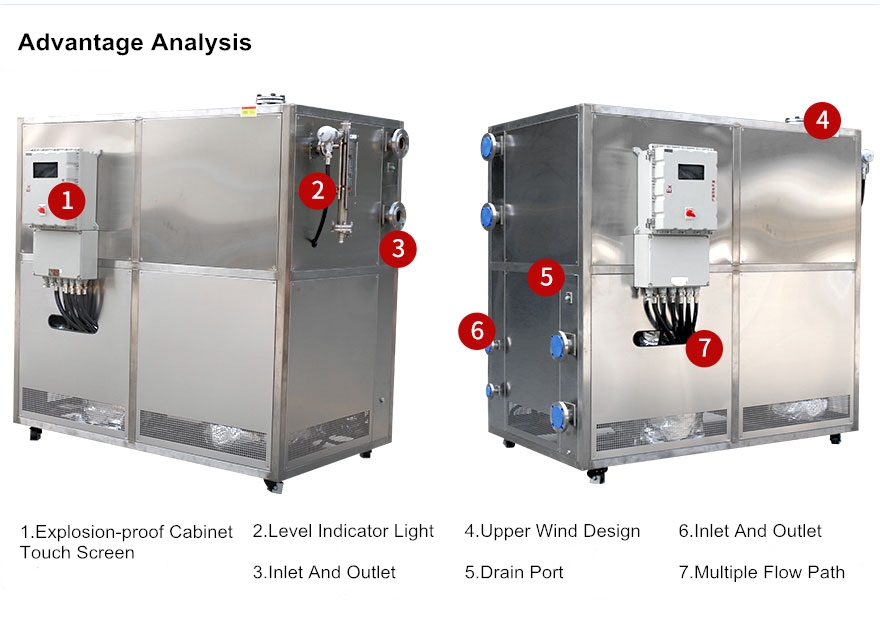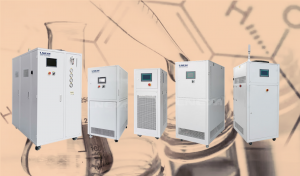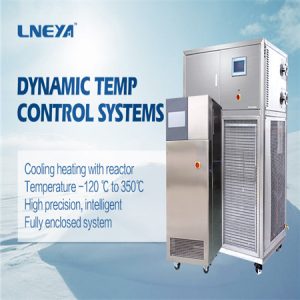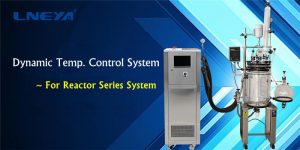Reactor temperature control unit TCU with PID control loop
LNEYA reaction kettle temperature control unit tcu adopts PID control loop, which has certain applications in many fields. The reaction kettle temperature control unit tcu of PID control loop adopts fully closed cycle refrigeration system, with fast cooling and heating speed and low noise.
The reaction tank temperature control unit tcu of the PID control loop can achieve a dynamic temperature control of -120 degrees to 300 degrees. The system uses existing thermal energy (such as steam, cooling water and ultra-low temperature liquids-the “primary system”) infrastructure integration To a single-fluid system or a secondary circuit that controls the temperature of the process equipment. This completes that only one heat-conducting liquid flows into the jacket of the reaction vessel (instead of direct steam, cooling water or ultra-low temperature liquid).
The reaction tank temperature control unit tcu of the high-precision PID control circuit is a high-precision constant temperature source with built-in cooling and heating. It can be used in the matching reaction kettle for constant temperature experiments, or connected to other equipment through a hose as a constant temperature source. The reaction tank temperature control unit tcu of PID control loop is widely used in petroleum, chemical industry, electronic instrumentation, physics, chemistry, biological engineering, medicine and health, life sciences, light industry food, physical property testing and chemical analysis and other research departments, colleges and universities, Enterprise quality inspection and production department.
The reaction tank temperature control unit tcu of the PID control circuit adopts high-precision PID program to control the temperature, which can directly heat and cool, and can also be used as a heat source or cold source for auxiliary heating and auxiliary cooling. It is used for chemical reaction process control in petrochemical, pharmaceutical and other For thermostats or external circulation applications of reaction kettles, automatic synthesis instruments, extraction and condensation devices, high-pressure protection and high-temperature protection of refrigeration and heating systems ensure long-term operation of the instrument.
In the practical application of the reaction tank temperature control unit tcu of the PID control circuit, in order to effectively guarantee the service life of the equipment and reduce the failure rate in use, as an operator, it is necessary to understand some necessary reaction tank temperature control units of the PID control circuit. tcu failure processing method, in order to better and more safely use the reactor temperature control unit tcu of the PID control loop.
Related recommendations
-
Disadvantages and advantages of general heat transfer oil heating circulation system
1595The heat conduction oil heating circulation system adopts a fully closed loop structure to directly act on the heat energy to the heated medium. Its advantages are: (1) Due to the continuous renewal of the heat transfer surface, the heat loss is s...
View details -
Misunderstanding about the operation of the factory boiler
1403The boiler is a very common equipment in the factory. LNEYA Xiaobian tells everyone that many people have misunderstandings about it. Misunderstanding 1 The higher the steam pressure, the better. The choice of boiler steam pressure depends mainly ...
View details -
Compressor key protection of reactor temperature control system
1906In the operation of the reactor temperature control system, the compressor is the core part, and its performance is more important. Therefore, it is necessary to protect the compressor. Under normal working conditions, the compressor of the temper...
View details -
How to choose reactor heating and cooling device?
1443When the user selects the heating and cooling device of the reactor, if the heating and cooling device of the reactor is not well understood, it will not know how to start when selecting, so how to choose the heating and cooling of the reactor is ...
View details
 LNEYA Industrial Chillers Manufacturer Supplier
LNEYA Industrial Chillers Manufacturer Supplier















